Our learning material and activities should be both usable and accessible to all students, regardless of age, ability, or situation. These guidelines will assist you in creating a more accessible course for all.
What is accessibility?
In keeping with the World Health Organisation’s International Classification of Functioning Disability and Health (WHO, 2001), accessibility may be viewed as an umbrella term for anything that influences a person’s ability to function within an environment. In other words, accessibility can be an indicator of how easily a person can participate in an activity, obtain information, engage in interactions and enjoy services.
Why accessibility?
There are specific laws In South Africa that require us to be aware of accessibility for all South Africans. These include:
- Section 9 of the South African Constitution, which says that ‘no person may unfairly discriminate directly or indirectly against anyone’ on grounds that cover a long list of criteria, including disability.
- The Promotion of Equality and Prevention of Unfair Discrimination Act (PEPUDA, 2000), which states that the elimination of any obstacles preventing the differently abled from enjoying any ‘equal opportunities’ and prohibits ‘failing to take steps to reasonably accommodate the needs of such persons.
- The Promotion of Access to Information Act or PAIA (2000) states that the ‘right of access to any information held by a public or private body may be limited to the extent that the limitations are reasonable and justifiable in an open and democratic society based on human dignity, equality, and freedom’.
- Section 19D of the Copyright Amendment Bill of 2015 (which is just awaiting the State President’s signature) includes a number of provisions for people with disabilities. These include making the production of specially adapted books for people with blindness or visual impairment easier by establishing a set of limitations and exceptions to traditional copyright law.
- The United Nations (2015) Sustainable Development Goals for 2030, to which South Africa is a signatory, states in relation to Goal 4 on Education: ‘By 2030, eliminate gender disparities in education and ensure equal access to all levels of education for the vulnerable, including people with disabilities’.
To ensure compliance with South Africa’s accessibility laws and ratified treaties, it is essential that content is accessible and is capable of accommodating people with disabilities.
How to design for accessibility
Designing with accessibility in mind (scroll down for the paragraph titled: Focus on accessibility)
Preparation of your source documents are essential. Please use the accessibility checkers built into the software you are using to ensure that your source document is complying to accessibility standards.
AllY
The AllY tool is built into clickUP to enable any user to download or display the information on a page in a different format. To access the AllY formats, access any page in clickUP and look for the A icon, for example:
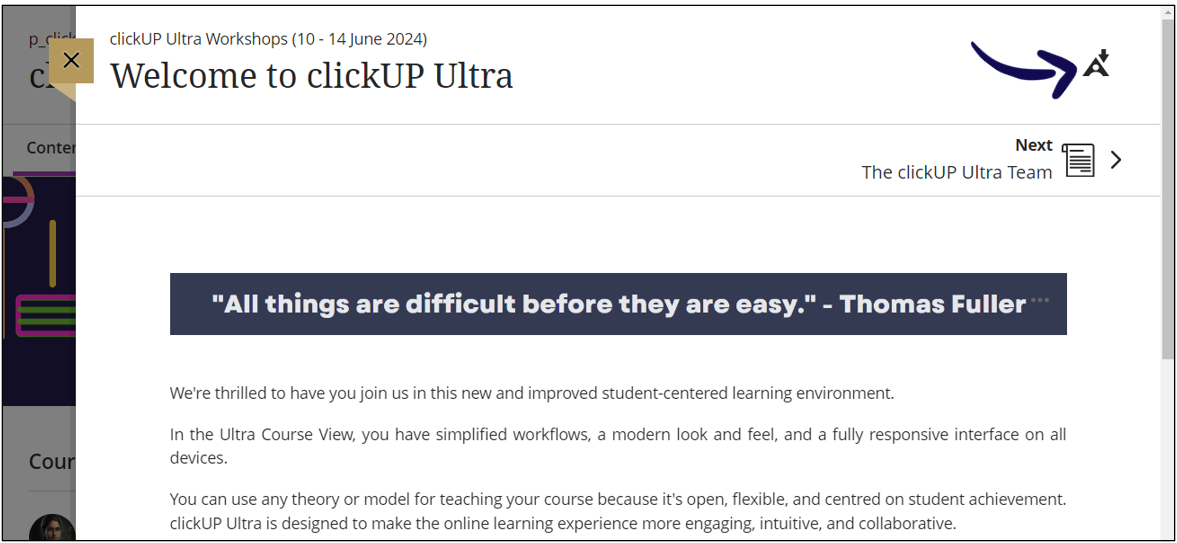
You will also note on documents or images a gauge that is either red, orange or green. This is an indication if that object is adhering to accessibility standards or not. For example:
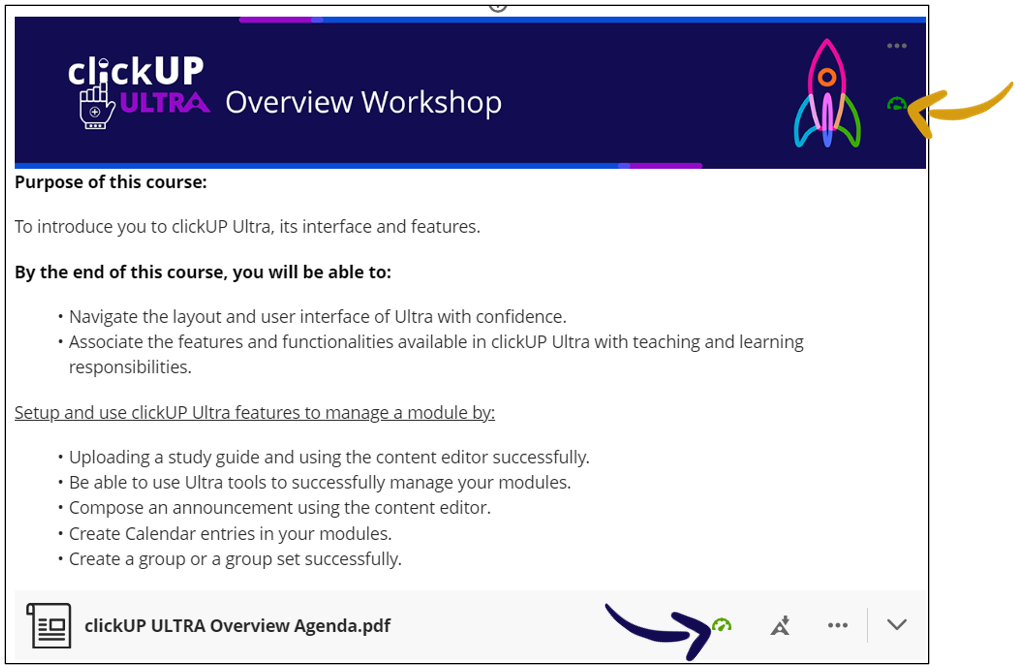
When you click on the gauge you will get an indication on how to fix it, for example if it had been red and you click on the red gauge, you will see the following information display:
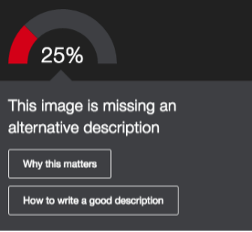
Accessibility Course Report
To check your course's accessibility score, follow these steps:
- On the Details & Actions panel, click on the link below Books & Tools.
- Choose the option: Accessibility Report LTI 1.3
- The report will display.
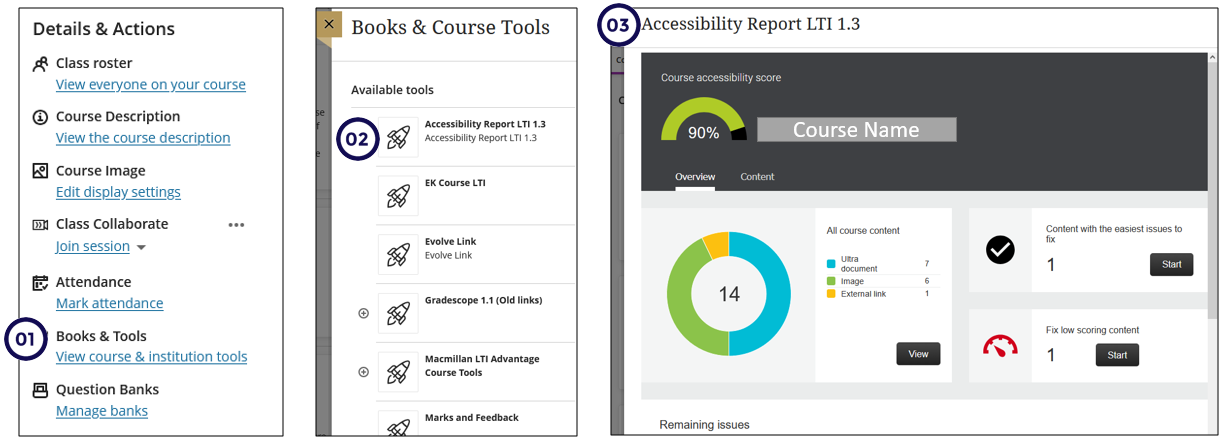
A well designed clickUP course's course accessibility score should be above 60%.
How to fix accessibility issues
Start from the top of the report and work your way down. For example:
-
Click on the first Start button displaying to fix the easiets mistakes first:
-
It will display the page or image that has a problem.
-
For images it is really easy to add alternative text. This animated image shows you how:
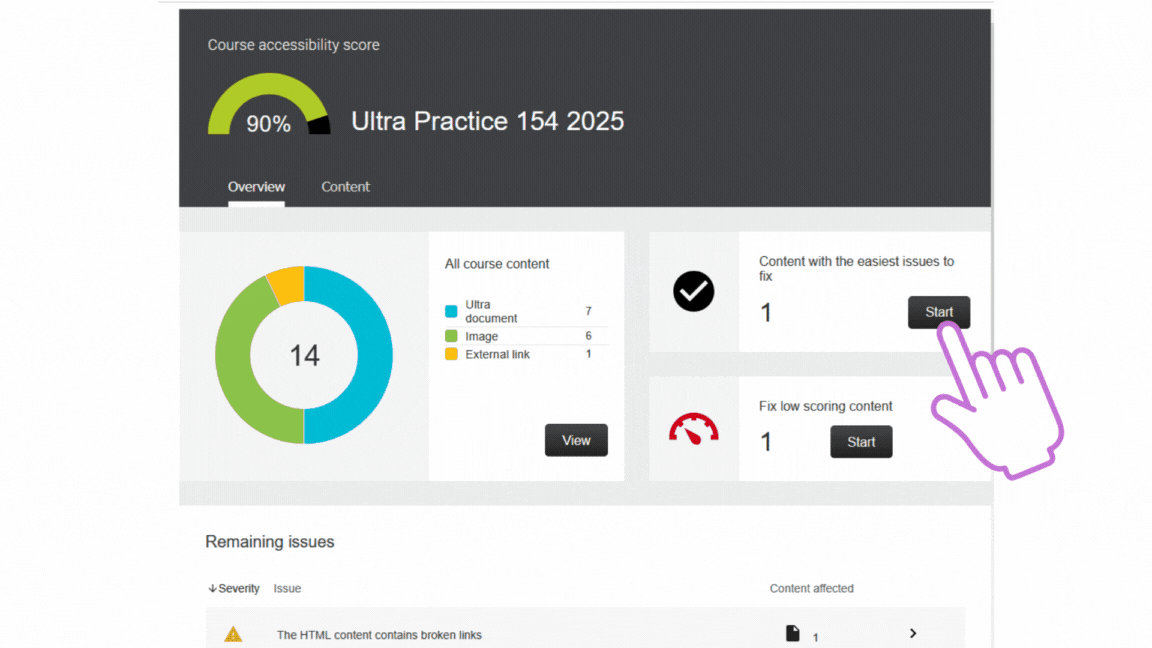 Read the AI generated text
Read the AI generated textDo not just assume what the AI provides is correct.
-
For documents, revert back to your source document e.g. MS Word or PPT to fix the issues there.
Should you wish to know more, you are welcome to enroll for the Self-paced fully online Accessibility course.
Credit to Dr Alecia Samuels